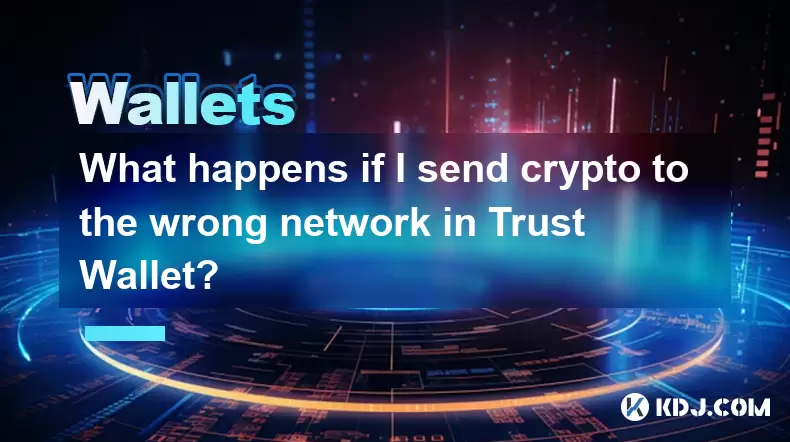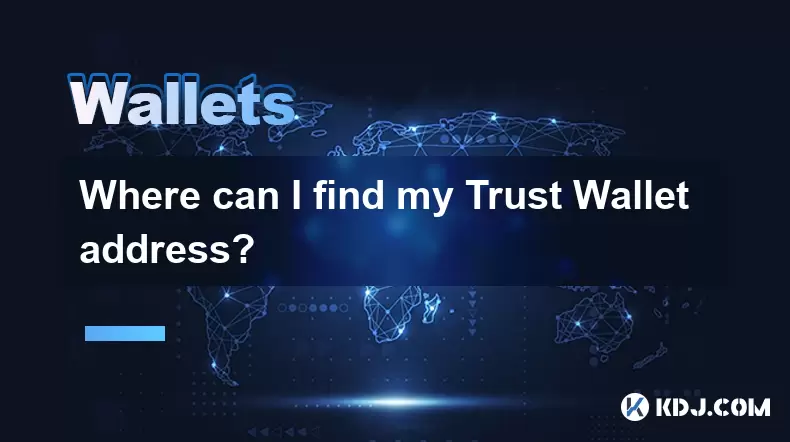-
 Bitcoin
Bitcoin $113900
-1.39% -
 Ethereum
Ethereum $3517
-4.15% -
 XRP
XRP $3.009
1.59% -
 Tether USDt
Tether USDt $0.9997
-0.04% -
 BNB
BNB $766.8
-1.41% -
 Solana
Solana $164.6
-2.38% -
 USDC
USDC $0.9998
-0.02% -
 TRON
TRON $0.3277
0.65% -
 Dogecoin
Dogecoin $0.2023
-1.67% -
 Cardano
Cardano $0.7246
0.05% -
 Hyperliquid
Hyperliquid $38.27
-4.77% -
 Sui
Sui $3.528
-0.52% -
 Stellar
Stellar $0.3890
-0.73% -
 Chainlink
Chainlink $16.16
-2.69% -
 Bitcoin Cash
Bitcoin Cash $539.9
-4.38% -
 Hedera
Hedera $0.2425
-2.00% -
 Avalanche
Avalanche $21.71
-0.97% -
 Toncoin
Toncoin $3.662
5.73% -
 Ethena USDe
Ethena USDe $1.000
-0.02% -
 UNUS SED LEO
UNUS SED LEO $8.964
0.35% -
 Litecoin
Litecoin $107.7
2.33% -
 Shiba Inu
Shiba Inu $0.00001223
-0.40% -
 Polkadot
Polkadot $3.617
-0.97% -
 Uniswap
Uniswap $9.052
-2.49% -
 Monero
Monero $295.1
-3.79% -
 Dai
Dai $0.9999
0.00% -
 Bitget Token
Bitget Token $4.315
-1.85% -
 Pepe
Pepe $0.00001060
0.11% -
 Cronos
Cronos $0.1342
-2.72% -
 Aave
Aave $256.0
-0.87%
How to top up from an exchange to Trust Wallet? Detailed steps for deposit operations
To top up your Trust Wallet from an exchange like Binance, withdraw the cryptocurrency, enter your Trust Wallet address, and confirm the transaction, ensuring network compatibility.
May 18, 2025 at 08:42 pm

Topping up your Trust Wallet from an exchange involves several steps that you need to follow carefully to ensure a smooth and secure transfer of your cryptocurrencies. This process can vary slightly depending on the exchange you are using, but the general steps remain largely the same. In this guide, we will walk you through the detailed steps for depositing funds from a popular exchange like Binance into your Trust Wallet.
Preparing for the Transfer
Before you start the transfer process, it's important to make sure you have everything ready. Ensure that you have enough funds in your exchange account to cover the amount you want to transfer, as well as any potential transaction fees. Additionally, make sure that the cryptocurrency you want to transfer is supported by Trust Wallet. You can check this on the Trust Wallet website or within the app itself.
Withdrawing from the Exchange
The first step in topping up your Trust Wallet is to withdraw the cryptocurrency from your exchange account. Here's how you can do this using Binance as an example:
- Log into your Binance account and navigate to the "Wallet" section, then click on "Overview."
- Find the cryptocurrency you want to withdraw and click on "Withdraw."
- Enter the amount you want to withdraw. Make sure you leave enough in your account to cover any withdrawal fees.
- You will need your Trust Wallet address for the next step. Open Trust Wallet, select the cryptocurrency you are transferring, and click on "Receive" to get your wallet address. Copy this address.
- Paste the Trust Wallet address into the withdrawal form on Binance. Double-check the address to ensure it is correct, as sending to the wrong address can result in the loss of your funds.
- Select the network for the withdrawal. Ensure it matches the network supported by Trust Wallet for that cryptocurrency.
- Review the withdrawal details and confirm the transaction. You may be required to enter a 2FA code or use other security measures to complete the withdrawal.
Receiving the Funds in Trust Wallet
Once you have initiated the withdrawal from the exchange, the next step is to wait for the funds to arrive in your Trust Wallet. The time it takes for the transaction to complete can vary depending on the cryptocurrency and the network congestion.
- Open Trust Wallet and navigate to the wallet of the cryptocurrency you are expecting.
- Refresh the wallet to check for any incoming transactions. You can do this by pulling down on the screen or clicking the refresh button.
- Once the transaction is confirmed on the blockchain, the funds should appear in your Trust Wallet.
Verifying the Transaction
After the funds have arrived in your Trust Wallet, it's a good practice to verify the transaction to ensure everything went smoothly.
- Check the transaction details in Trust Wallet by clicking on the transaction and reviewing the amount, the sender's address (which should be the exchange's address), and the transaction hash.
- You can also use a blockchain explorer to verify the transaction. Copy the transaction hash from Trust Wallet and paste it into a blockchain explorer for the specific cryptocurrency to see the transaction details and confirmations.
Handling Potential Issues
Sometimes, issues can arise during the transfer process. Here are some common problems and how to address them:
- Transaction is taking too long: Check the blockchain explorer to see if the transaction is still pending or if it has been confirmed. Network congestion can cause delays.
- Transaction failed: If the transaction fails, the funds should return to your exchange account. Check your exchange account balance and contact their support if necessary.
- Wrong address entered: If you accidentally sent the funds to the wrong address, contact the exchange's support immediately. Recovery is possible in some cases, but not guaranteed.
Security Tips
When transferring funds between an exchange and Trust Wallet, it's crucial to prioritize security to protect your assets.
- Always double-check the wallet address before confirming the withdrawal. A single mistake can lead to the loss of your funds.
- Use strong security measures on your exchange account, such as 2FA, to prevent unauthorized access.
- Keep your Trust Wallet app updated to benefit from the latest security features and bug fixes.
- Be cautious of phishing attempts. Only enter your wallet address on the official exchange website and never share it with anyone.
Frequently Asked Questions
Q: Can I transfer any cryptocurrency from an exchange to Trust Wallet?
A: Not all cryptocurrencies are supported by Trust Wallet. Before initiating a transfer, check the list of supported assets on the Trust Wallet website or within the app.
Q: What should I do if I encounter high network fees during the transfer?
A: High network fees can be a challenge. You can try to transfer during off-peak times when network congestion is lower, or consider using a different network if the cryptocurrency supports multiple networks.
Q: Is it safe to store large amounts of cryptocurrency in Trust Wallet?
A: Trust Wallet is designed to be secure, but storing large amounts of cryptocurrency in any wallet comes with risks. Consider using hardware wallets for significant amounts and only keep what you need for transactions in Trust Wallet.
Q: How can I track the status of my transaction after initiating the withdrawal?
A: You can track the status of your transaction using the transaction hash provided by the exchange. Enter this hash into a blockchain explorer for the specific cryptocurrency to see the current status and number of confirmations.
Disclaimer:info@kdj.com
The information provided is not trading advice. kdj.com does not assume any responsibility for any investments made based on the information provided in this article. Cryptocurrencies are highly volatile and it is highly recommended that you invest with caution after thorough research!
If you believe that the content used on this website infringes your copyright, please contact us immediately (info@kdj.com) and we will delete it promptly.
- DeFi Token Summer Gains: Is Mutuum Finance the Real Deal?
- 2025-08-02 18:30:12
- Bitcoin, Realized Price, and the Top: Are We There Yet?
- 2025-08-02 18:30:12
- Dogwifhat (WIF) Rally: Will the Meme Coin Bite Back?
- 2025-08-02 19:10:12
- PayFi Heats Up: Tron's AMA Recap & TRX's Bullish Nasdaq Debut
- 2025-08-02 19:10:12
- ARK Invest, Coinbase, and BitMine: Decoding the Crypto Investment Shuffle
- 2025-08-02 19:15:23
- JasmyCoin Under Pressure: Bears Grip Tight, Testing Lower Support
- 2025-08-02 19:15:23
Related knowledge

What is a watch-only wallet in Trust Wallet?
Aug 02,2025 at 03:36am
Understanding the Concept of a Watch-Only WalletA watch-only wallet in Trust Wallet allows users to monitor a cryptocurrency address without having ac...

How to switch between networks in Trust Wallet?
Aug 02,2025 at 12:36pm
Understanding Network Switching in Trust WalletSwitching between networks in Trust Wallet allows users to manage assets across different blockchains s...

How to check my full transaction history on Trust Wallet?
Aug 02,2025 at 09:24am
Understanding Transaction History in Trust WalletTrust Wallet is a widely used non-custodial cryptocurrency wallet that supports a broad range of bloc...

Why is my Trust Wallet balance zero?
Aug 02,2025 at 03:49am
Understanding Trust Wallet Balance Display IssuesIf you're seeing a zero balance in your Trust Wallet despite knowing you've previously received or se...

What happens if I send crypto to the wrong network in Trust Wallet?
Aug 02,2025 at 07:22pm
Understanding Network Compatibility in Trust WalletWhen using Trust Wallet, it's essential to understand that different cryptocurrencies operate on di...

Where can I find my Trust Wallet address?
Aug 02,2025 at 06:07pm
Understanding Your Trust Wallet AddressYour Trust Wallet address is a unique identifier that allows others to send you cryptocurrency. It is a string ...

What is a watch-only wallet in Trust Wallet?
Aug 02,2025 at 03:36am
Understanding the Concept of a Watch-Only WalletA watch-only wallet in Trust Wallet allows users to monitor a cryptocurrency address without having ac...

How to switch between networks in Trust Wallet?
Aug 02,2025 at 12:36pm
Understanding Network Switching in Trust WalletSwitching between networks in Trust Wallet allows users to manage assets across different blockchains s...

How to check my full transaction history on Trust Wallet?
Aug 02,2025 at 09:24am
Understanding Transaction History in Trust WalletTrust Wallet is a widely used non-custodial cryptocurrency wallet that supports a broad range of bloc...

Why is my Trust Wallet balance zero?
Aug 02,2025 at 03:49am
Understanding Trust Wallet Balance Display IssuesIf you're seeing a zero balance in your Trust Wallet despite knowing you've previously received or se...

What happens if I send crypto to the wrong network in Trust Wallet?
Aug 02,2025 at 07:22pm
Understanding Network Compatibility in Trust WalletWhen using Trust Wallet, it's essential to understand that different cryptocurrencies operate on di...

Where can I find my Trust Wallet address?
Aug 02,2025 at 06:07pm
Understanding Your Trust Wallet AddressYour Trust Wallet address is a unique identifier that allows others to send you cryptocurrency. It is a string ...
See all articles

























































































